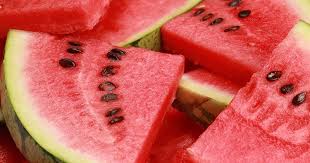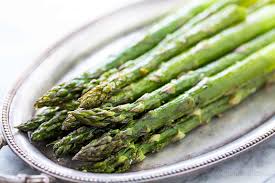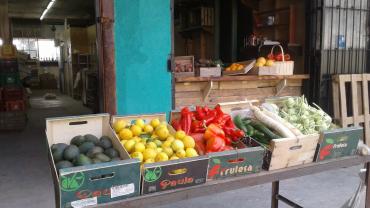Indispensable.
The Jellyfish, oh, the Jellyfish. They took over every good spot. A particularly sea-loving friend wrote to me that she had come to the beach, which was entirely strewn with jellyfish, and decided to ignore them and get in, because how could she just settle for sand, the rhythmic tic-tac-tic of the Matkot and pop-sickles with this beautiful great big blue in the background. The conclusion, she says, is that the jellyfish warnings are indeed true. This year they are especially stingy. So what do we do this summer, at the height of its bloom, when the camps are finished, in dire straits, and the water are jam-packed with jellyfish? Of course, you can try to enjoy the pool, but rumor has it that if you don't get there in the early hours of the morning, you’d rather go to a sea of jellyfish…Anyway, the contingency plan I offer you – is watermelon.
Watermelon is one of those items that are always on the shopping list, in the summer, because there should always be some in the fridge. You can buy a half, a whole, it can be small and it can be big – but when the fridge has some cool slices of watermelon, there is something to look forward to when you get home. This watermelon in the fridge also answers the need of the kids friends who sometimes arrive with no warning and in a large, noisy and sweaty group, scouring the fridge to find some salvation (or, they are trying to cram inside to cool down a bit). Along with a bag of dry corn kernels (yes, yes, not a microwave popcorn bag, but corn kernels, those that need to be popped in a pot with oil, those I certainly recommend. I have recently tried it, and it is unbelievably more deliciousas well as fascinating for the children to see how these kernels pop in the pot). Organic watermelon and popcorn. A perfect combination, and you have refreshing snacks for any amount of children that happen to show up.
When it is too hot outside (and all of August is too hot outside) and we don't really feel like eating anything, watermelon and a fresh salad provide a great solution. Watermelon is the culinary chameleon of light foods: with salty cheese, alongside a fruit salad, crushed in a glass with ice cubes – Any combination goes well.
Botanically, the watermelon is a fruit because it carries the seeds and developed from an ovary of a flowering plant.The watermelon grows crawling on the earth, not on a tree or shrub. Also in the Israelite's monologue, when departing from Egypt and complaining about the loss of meals in the Egyptian cafeteria, the watermelon appears within a list of fruits:
( "זָכַרְנוּ אֶת הַדָּגָה אֲשֶׁר נֹאכַל בְּמִצְרַיִם חִנָּם אֵת הַקִּשֻּׁאִים וְאֵת הָאֲבַטִּחִים וְאֶת הֶחָצִיר וְאֶת הַבְּצָלִים וְאֶת הַשּׁוּמִים" (במדבר י"א, ה))
It belongs to the gourd family (all professional crawlers) and actually does originate from Egypt. The vast majority of it (almost like a jellyfish, but opposed to it…) is made of water and about 7% of it is sugar, this is why it tastes so good and is welcome to stay in our fridge (and jellyfish are not). It is also rich with nutritional fiber, known for their ability to "speed up processes" in our digestive system, and its high water content is good for the other parts of that system. A bit like a kidney flush.
However, do not let the high water content mislead you, the watermelon has much more than just water: the red color indicates the content of lycopene which isan antioxidant carotenoid that protects cells from potential destruction of the DNA inside them, and therefore is considered to help protect the body from cancer cells (it is also found in other red fruits and vegetables, like tomatoes, red grapefruits and red peppers), and also contributes to eye health, skin appearance and the cardiovascular system. In addition, the watermelon also contains vitamins from the A, B, and Cgroups, as well as calcium, magnesium and potassium.
How to choose an Organic watermelon? There is no need to thump it, it is best to carefully examine the peel: a yellowish (not white) spot marks the spot where the watermelon laid on the ground. Apparently, watermelons with a more yellowish stain will be sweeter. Watermelons with a cobweb mark on them (indicating the location where the pollination occurred) are also expected to be sweeter. Another part worth checking is the stem – the place where the watermelon was attached to the plant. The stem should be brown and dry, not green and flexible. A green stem is a sign that the watermelon was picked before completely ripening.
To health!
Yours,
Maggie's Garden team
Forecast:
In the ORGANIC vegetable baskets we expect (draft only):
Tomato
Cucumber
Lettuce
Onion
Carrot
Parsley
Potato
Kale
Pumpkin
The LARGE organic vegetable baskets also include:
Coriander
Cabbage
Beetroot
In the ORGANIC fruit baskets:
Papaya
Banana
Watermelon
The LARGE organic fruit baskets also include:
Grapes
Melon
New! New! The ORGANIC Green Basket:
Swiss chard
Mint
Basil
Dill
Sprouts
Celery root
A kind of lettuce
Green onion












